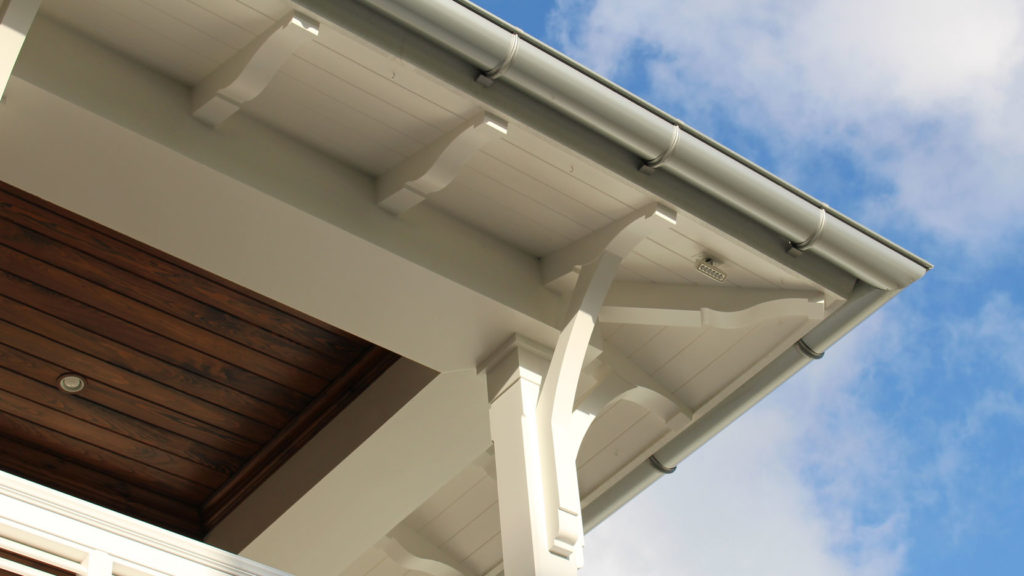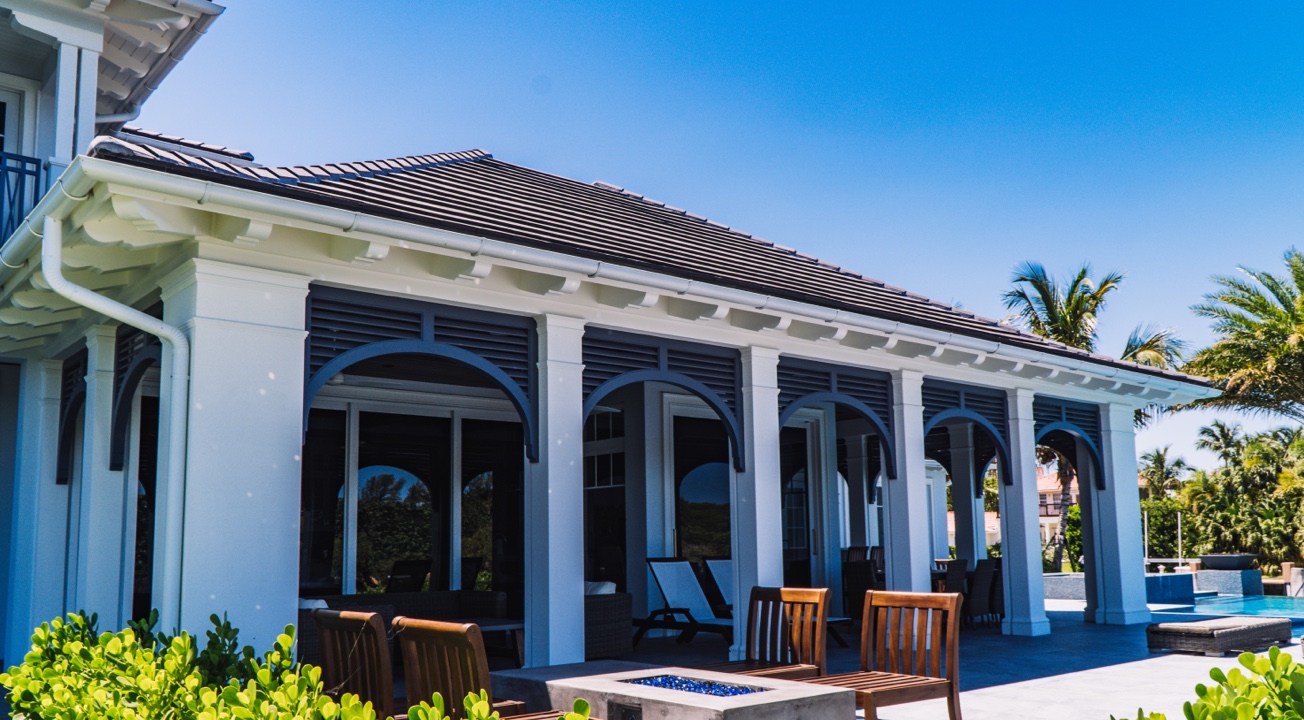Everything you need to know about Fascia Boards!
You are not alone when I say it is acceptable to be utterly oblivious to what fascia boards are! It may not look like much, but a fascia board is an essential component of your home’s plumbing and gutter system. A fascia board is a thin longboard that runs along the lower outer edge of your roof and covers the entire roofline. Why are they so important? Fascia Boards are what holds your home’s gutter system in place. With this general knowledge, continue reading for a detailed guide on fascia boards and keep yourself updated as homeowners on the best materials and solve specific problems that can arise with fascia boards. Plumbing and sewage issues can be a nightmare for almost anyone, so stay with us as we cover Everything you need to know!
What is a Fascia Board?

The fascia board is mounted where the roof meets the house’s outer walls and, as already emphasized before, prevents the rafters from rotting, supports the roof structure, and holds up the gutters. Furthermore, the fascia is attached directly to the lower ends of the roof trusses and usually does all the work supporting the lower edge of the tiles’ bottom row. Lastly and perhaps most importantly, the fascia board carries all the guttering. Without a doubt, it may not like much but what the fascia does is no easy feat; it is an integral part of the home. Let’s use an example to build some context. Imagine a downpour, two to three days of heavy rain. The average three-bedroom apartment/home could be flushing down several gallons of water per second, and the fascia supports those very gutters!
One explanation as to why homeowners are so confused about a fascia board is that it isn’t immediately evident to everyone; the fascia board covers the roofline’s entirety and is often hidden behind horizontal sections of the gutters. In addition to supporting and holding up the gutters of your home, the fascia board also works in tandem with the soffit system; in architecture, the soffit is an interior material used to cover the undersides eaves.
What is the Purpose of a Fascia Board?
A fascia board’s primary function is to protect your home from interior and exterior moisture-related damage by preventing water infiltration. This is why it is critical that the fascia board adequately supports the gutters and keeps them in place. This isn’t just limited to your home; the fascia also keeps both residential and commercial roofing systems in good condition by preventing moisture and excess water buildup. Fascia boards can tend to have an aesthetic value; they can give your roof a finished look by covering up all the exposed roof trusses and the open roughish ends of the rafters. This can increase the curb value of your home.
 Best Material for Fascia Boards
Best Material for Fascia Boards
Fascia Boards are often made from a wide range of different materials, each posing various advantages and challenges. The most common materials include wood, PVC, fiber cement, vinyl, and aluminum.
-
- Wood:
Wood is perhaps the most common selection when it comes to designing a fascia board. Wood designs can bring a pleasing aesthetic value to the home, especially if your home has wooden siding. Typically for fascia boards, cedar and redwood are popular choices given their resistance to rot from excessive moisture. However, if you prime and paint the fascia, then fir, spruce, and pine can also make beautiful choices from a design standpoint. - PVC:
Essentially plastic, PVC fascia boards are made from the same material as your pipes and tubes but tend to look similar to wood-based fascia boards. PVC fascia boards’ critical advantage over wood is they are more efficient in rot-resistance and don’t look terrible either. PVC fascia boards also come in a wide selection of colors and can be painted as per preferences. However, given how PVC is plastic and hence will expand, it’s best to use glue and headed nails to secure the board to your roof. - Fiber Cement/Composite Fascia Boards:
Composite or fiber cement fascia boards are made from an amalgamation of recycled woodchips and sawdust bonded together by epoxy resin. Composite fascia boards are on the more expensive side and cannot be painted, making them slightly unpopular. However, given their impressive rot resistance and durability, if customization and the general ‘look and feel’ isn’t your highest priority, then a composite fascia board is a great option to keep in my mind. - Vinyl:
Vinyl, with its properties, makes it an excellent choice to make a fascia board. With proficient durability, superior quality, and a lower maintenance cost than wood, make this a viable option. - Aluminum:
Aluminum and Vinyl are very similar in stature when it comes to the quality of the material and properties associated with the board’s design. However, this is a slight pricer option.
- Wood:
Fascia Board ‘Know Hows’
Here are some answers to FAQs regarding fascia Boards!
When to Replace a Fascia Board?- How to spot water/moisture damage
Trim components like a fascia board, in all, honestly is how your home lives and breathes. Hence, it is important to keep regular eyes on it and look out for any key indicators that illustrate damage. With references to the previous section, the most common material that may need to be replaced is a wooden one. For a fascia board, here are the indicators to spot that are a giveaway that its time to be replaced:
-
-
- Moisture damage
- Curling shingles
- Pests
- Wood rot.
-
A fascia board is a crucial component in keeping your roof healthy. Winter weather like heavy rain or snow can lead to severe damage indicated by cracked or curling roof shingles. You will also want to look out for paint peeling, leakages, and any discoloration
Why does a Fascia Board Rot?
In addition to the cases mentioned above, here are two more primary reasons that can lead to rotting in wooden or other material fascia boards:
-
-
- Leaky Gutters: A fascia board needs to support and hold the guttering system in place. As simple logic would suggest, if your gutter has a leakage problem, that would most definitely cause some rotting. Old gutters or if the gutter has been improperly mounted/aligned can cause excess moisture to seep into the fascia, causing rot. In more extreme cases, the water may drip and spill over the fascia.
- Storm Damage: Due to the fascia board’s location, the home’s connection isn’t as strong as one would like. This leaves it vulnerable to substantial damage via a wind-heavy storm. If your roof is damaged, it is best to call for repairs to mitigate any damage sustained to your fascia board.
-
Cost to Replace a Fascia Damage
In case of damage as described in the above scenarios, here is how much it will set you back to replace a fascia board:
replacing your fascia board can cost around $15 to $25 a linear foot installed. Prices for the replacement can depend on several factors, including the material used and your home’s size. It can cost up to $5,000 or more to repair damaged or rotted fascia.
This blog post curated a comprehensive guide on Everything you need to know about Fascia Boards. In a quick summary, do not overlook the smaller or rather more unknown components to your home like a fascia. It’s the little things in life we often miss; the same applies here! A fascia is a critical component to your roof and home’s upkeep and health.
Conclusion
This blog post curated a comprehensive guide on Everything you need to know about Fascia Boards. In a quick summary, do not overlook the smaller or rather more unknown components to your home like a fascia. It’s the little things in life we often miss; the same applies here! A fascia is a critical component to your roof and home’s upkeep and health.












7 thoughts on “Fascia Boards: Your Guide to Fascia”
Comments are closed.